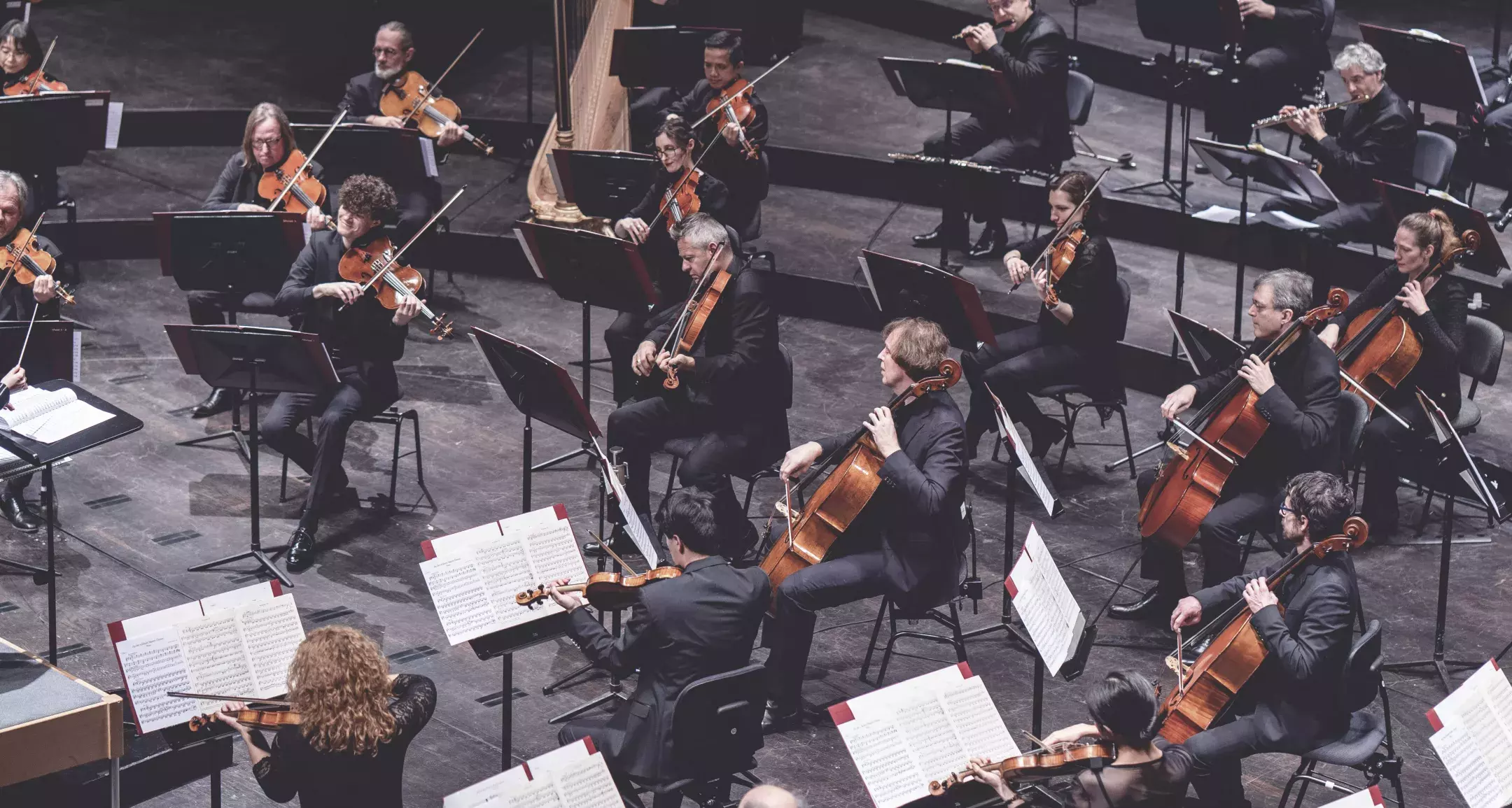
Programme
Richard Strauss (1864-1949)
Serenade in E-flat major, Op. 7, „Serenade for Winds”
Richard Strauss (1864-1949)
Metamorphosen für 23 Solostreicher
Richard Wagner (1813-1883)
Siegfried-Idyll, WWV 103
extra information
Strauss: Serenade for Wind Instruments
The father of Richard Strauss was named Franz, and he was the first horn player in the Königliche Bayerische Hofkapelle. He was a brilliant musician, but had very conservative tastes. He revered Mozart and Haydn above all others. He found that the late Beethoven was much too indicative of Wagner, a composer whom he saw as the proverbial devil. Franz's attitudes left their traces on a composition written by his son at barely seventeen years of age: the Serenade for Wind Instruments. Four horns are given a leading role, while the sonata structure within which the piece was written owes much to classical composers like Haydn and Mozart. The daring harmonies that would characterise Richard Strauss’ later work are nowhere to be seen in this composition. The young composer did demonstrate that he had already thoroughly mastered his craft, and experimented fully with the various timbres that wind instruments are capable of producing.
The Serenade for Wind Instruments occupies a special place among Strauss’ early work, as it earned him his first recognition outside his region. One of his father's acquaintances, Franz Wüllner, conducted the piece in 1882 in Dresden. It was then picked up by Hans von Bülow, the conductor who handled the premiere of Wagner’s Tristan und Isolde and Die Meistersinger von Nürnberg. Hans von Bülow conducted Strauss’ Serenade for Wind Instruments in a concert with the Meininger Hofkapelle that toured Germany in 1884. This was an unprecedented honour for the young Strauss, whose work had been performed almost exclusively in Munich until then. Hans von Bülow also commissioned him to compose a suite for wind instruments, which would result in the Suite in B-Flat Major, also for thirteen wind instruments.
Strauss: Metamorphosen
More than half a century later, in 1945, the now 80-year-old Richard Strauss wrote his final orchestral composition: a work for 23 solo string instruments titled Metamorphosen. In essence, this composition was strongly influenced by the end of the Second World War. As one of the few artists not to flee Germany, Richard Strauss saw at first-hand how, from 1942, the Allied forces’ aerial bombardment reduced one German city after the other to rubble. His birth city of Munich was also hard hit. During the night of October 3-4, the Nationaltheater (where Strauss had spent half of his life) was wiped from the map. This and other traumatic experiences formed the background to the lament that Strauss wrote in his despair.
One day after the Wiener Staatsoper was destroyed by the Allies, on March 13, 1945, Richard Strauss began to gather a number of sketches, assembled “with all the rhetorical means developed over the centuries to express pain”, into a 25-minute composition for 23 solo string instruments. Officially, the work was commissioned by Paul Sacher, who tried to lure him away from Germany with it. However, the premiere in Zurich did not take place until the Second World War was over, in 1946.
Following his obsession with Schopenhauer and Nietzsche under Wagner's influence – in compositions such as Also Sprach Zarathustra, Elektra and Salome – Richard Strauss saw Goethe as his greatest soul mate at the end of his life. He read his work over and over. He even recorded a couple of lines of the Weimar poet's verse in the sketchbooks he used. Strauss’ chosen title of Metamorphosen – when the work could just as easily have been named Variations – is easily associated with Goethe’s philosophy (and books like Die Metamorphose der Pflanzen). Another important reference is Beethoven’s Symphony No. 3. Strauss quotes the theme of the Marcia Funebre (or second movement) at the very end of his composition, working towards it with further variations throughout.
Wagner: Siegfried-Idylle
Whereas Strauss is mournful in Metamorphosen, Wagner is joy itself in a work like the Siegfried-Idyll. He wrote this composition in 1870 for his wife Cosima, daughter of Franz Liszt, to commemorate the birth of their first son, Siegfried (also known as ‘Fidi’). The first performance was given on the morning of Christmas Day 1870, the day after Cosima’s 33rd birthday. The location was the stairway of Wagner’s house in Tribschen on Lake Lucerne in Switzerland. The players had tuned up in the kitchen and woke Cosima with Wagner’s music in the most delightful manner. The piece's original title sums all of this up with the words: Tribschener Idyll mit Fidi-Vogelgesang und Orange-Sonnenaufgang, als Symphonischer Geburtstagsgruss. Seiner Cosima dargebracht von ihrem Richard.
Wagner originally orchestrated the piece for sixteen instrumentalists - the number that could be accommodated in his stairway. He later rewrote the work for a larger instrumentation and sold it to a publisher in an attempt to resolve his financial troubles. This was a great disappointment for Cosima, who considered the composition to be private. “The secret treasure is now public property,” she wrote in her diary. The main theme of the Siegfried-Idyll returns in the musical drama Siegfried, the third part of Wagner’s Der Ring der Nibelungen cycle. In the third movement, Brünnhilde sings the words “Ewig war ich” to the same melody.
Mien Bogaert
image © Vincent Callot